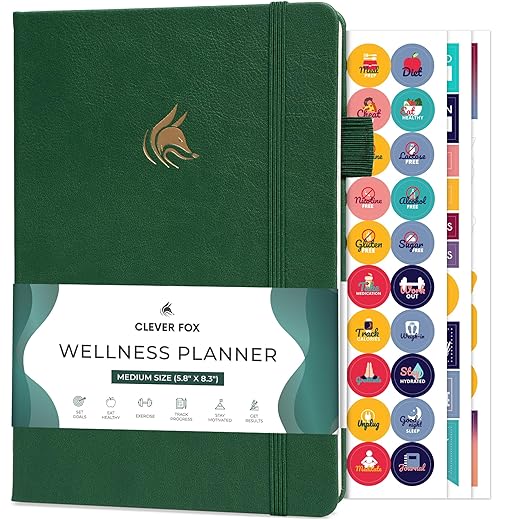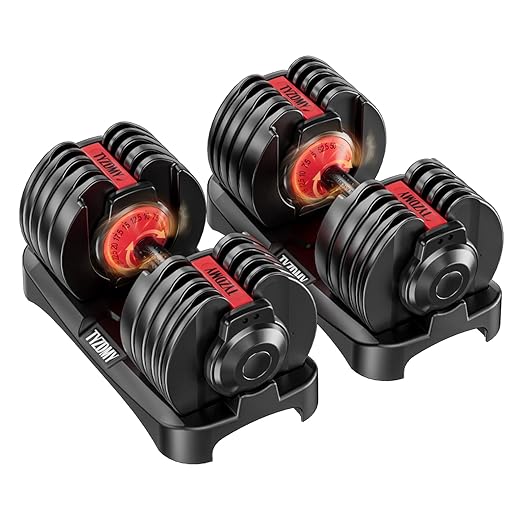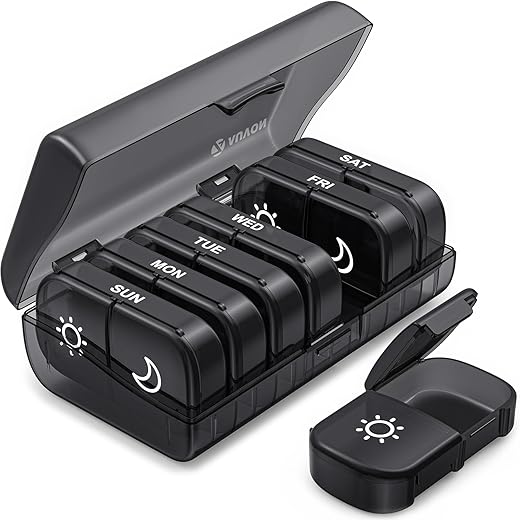Why small, lasting habits beat big, short-lived plans
Do you think you must overhaul everything to live longer? You don’t. Small, steady choices add up. Daily habits—simple, pleasant, repeatable—build a healthier life more reliably than extreme programs you can’t sustain.
Consistency beats perfection. When you choose tiny, realistic actions you enjoy, they compound into meaningful change over months and years. This article gives friendly, practical strategies to help you move more, eat better, sleep deeper, manage stress, strengthen relationships, and prevent problems early. You’ll learn how to pick habits that fit your life and stick with them so health becomes something you live, not a project you quit. Start small today, and watch better years quietly stack up for good.




Move more, sit less: make activity part of your everyday
Three simple movement types (and why each matters)
Light aerobic movement keeps your heart and mood humming; aim for steady walking, cycling, or dancing. Strength work preserves muscle and bone—critical as you age. Mobility and balance reduce falls and morning stiffness.
Easy ways to fold movement into your day
Swap a sit for a stand: take a 5–10 minute walk every hour. Try walking meetings or phone calls. Choose stairs over elevators when you can. Short bodyweight sets between tasks—10 squats, 8 push-ups, 20-second single-leg stands—add up fast.
If you want focused strength at home, a compact option like adjustable dumbbells saves space and lets you progress gradually (compare to single-weight sets that clutter the closet). For tracking steps and active minutes, a wrist tracker such as the Fitbit Charge or Apple Watch gives quick feedback and nudges.
Targets that are realistic and flexible
Progress without burning out
Start with the smallest version of a habit: one lap, one set. Increase by 10–20% a week. Use habit-stacking (do lunges right after brushing teeth) and environmental cues (leave your walking shoes by the door) so you rely less on willpower.
Measure wins and troubleshoot
Track small wins: daily step counts, total “active minutes,” or fewer stiff mornings. If time is tight, split workouts into micro-sessions. If pain limits you, swap to low-impact options like swimming or cycling, and check with a clinician. Bad weather? Do stairs, a short home circuit, or follow a 10-minute online mobility video.
Next up: how simple, tasty food habits multiply the benefits of regular movement.
Eat for life: simple, tasty habits for lasting nutrition
You’ll build a flexible pattern that helps you feel good and stay well—without strict rules. Focus on whole foods, plant-forward plates, and tiny swaps that add up.
Plant-forward plates and smart swaps
Aim to make vegetables, fruits, whole grains, and legumes the bulk of your meals. Swap these common items:
These swaps give you more fiber and slow-burning energy so you stay full longer.
Meal structure that’s satisfying
Balance each plate simply:
A quick example: grilled salmon, a scoop of quinoa, and a big mixed-greens salad tossed with olive oil and lemon—easy, filling, and portable.
Batch-cook, shop smarter
Batch-cooking shrinks weekday friction. Roast a tray of veggies, cook a pot of lentils, and portion proteins for 3–4 days. Keep a short grocery list: greens, two veggies, a grain, a protein, and one fresh fruit.
Containers like these make leftovers visible and convenient—science shows visible healthy food increases intake.
Mindful eating and social navigation
Slow down: put forks down between bites, take three deep breaths before you start. At restaurants or parties, try these moves:
Tiny changes that compound
Add one extra vegetable at dinner, swap one snack for a handful of nuts, or replace soda with sparkling water. These low-friction moves become habits—and they support better sleep and recovery, which we’ll cover next.
Sleep like you mean it: habits for deeper, restorative rest
Good sleep is the quiet workhorse behind repair, memory, immune function, and mood. These simple, repeatable habits help you fall asleep faster and wake up genuinely refreshed.
Set a consistent sleep window
Pick a realistic bedtime and wake time that fits your life and stick with it—weekends included as much as possible. Aim for a nightly target (most adults: 7–9 hours). If you’re short on time, pick a consistent wake time first; sleep will adjust around it.
Wind-down rituals (low-tech and reliable)
Build a 30–60 minute pre-sleep routine:
Bedrooms that cue rest
Keep the room cool (around 60–67°F / 15–19°C), dark, and quiet. Blackout curtains or a sleep mask block stray light; a cool-sheet set (linen or moisture-wicking cotton) helps on hot nights. For light control, bulbs like Philips Hue let you dim warm light automatically.
Noise matters: a white-noise machine or a fan smooths sudden sounds. If you prefer tech, smart thermostats and fans can lower temp before bed.
Cut common disruptors
When sleep goes sideways
If you can’t sleep, get out of bed for 10–20 minutes—do something quiet until you feel tired. Short naps (20–40 minutes early afternoon) can boost alertness; avoid long late naps. After a bad night, favor consistent wake times and naps under 45 minutes to recover without upsetting your rhythm.
These habits are low-friction and portable—keep experimenting until you find the rhythm that fits your life. Up next: stress tools that protect your sleep and your day.
Manage stress without drama: simple tools you’ll actually use
Stress chips away at sleep, immunity, and focus as you age—so tame it with tiny, repeatable habits. These are fast, practical techniques you can use on breaks, commutes, or between meetings.
Quick breathing tools (doable anywhere)
Mindful micro-practices (60–120 seconds)
Try a 1–2 minute body scan: notice feet → calves → thighs → torso → shoulders → face, releasing tension as you go. Label emotions out loud (“I’m frustrated”)—naming reduces their intensity. A short sensory check (name 3 things you can see, 2 you can touch, 1 you can hear) brings you back to the present.
Move to reset
Micro-movements change your state: a 5-minute brisk walk, a set of 10 standing squats, or shoulder rolls at your desk clears cortisol and sharpens thinking. Use a standing commuter, short stair climb, or exit one stop early on transit for a quick reset.
Boundaries and time energy
Protect emotional bandwidth by saying “not now” or setting a 15-minute check-in window for small requests. Batch email and messages into two slots a day. Treat your calendar like a bank account—spend time where it gives most return.
Reframe, accept, solve
When stress spikes, ask: Is this solvable now? If yes, pick one small next step and set a 5–15 minute timer. If not, practice acceptance: “This is uncomfortable, but it will pass,” then redirect to a breathing or movement reset.
Build a low-stress daily rhythm
Add mini check-ins (morning intention, midday pause, evening gratitude), mute notifications after dinner, and keep one enjoyable ritual that isn’t productivity-focused. These tiny anchors lower your baseline stress so you have more energy for people and projects.
Next up: how connection and belonging add years and joy to your life.
Connect, belong, thrive: relationships that add years
Social connection is one of the most powerful predictors of long-term health — some studies show the effect is as large as major lifestyle changes. Think of your relationships as a longevity habit: small, regular investments compound. Here’s how to make those investments doable and enjoyable.
Nurture what you already have
Turn existing ties into tiny, repeatable rituals so connection doesn’t become another chore.
Expand your circle without pressure
You don’t need dozens of friends—one or two new warm connections a year can shift your social life.
Build deeper, meaningful interactions
Depth beats breadth. Practice small skills that create trust.
Balance connection with solitude
Protect your energy so social time is sustainable.
Small checks, smart prevention: daily habits for long-term health
Prevention is a quiet winner: small, routine checks catch issues early and keep you moving. Think of them as low-effort, high-return habits you can weave into your week.
Routine screenings and vaccinations
Follow age- and risk-based guidelines: blood pressure and cholesterol checks, colon cancer screening, mammograms or PSA when recommended, and vaccinations like annual flu, Tdap, shingles, and COVID boosters. Book exams once a year and set calendar reminders for when tests roll due—you’ll be glad you did when a tiny issue is caught early.
Daily home checks that matter
A few quick signals predict bigger trends:
Track, schedule, and simplify
Create a one-page personal health checklist: screenings, vaccines, meds, and red flags to watch. Use whatever fits—Apple Health, MyChart, Evernote, or a single journal line each night. Make appointments part of your rhythm by batching (annual physical + dental check in the same month) and using recurring calendar events.
Medications, alcohol, and sun protection
Stay adherent with reminders (phone alarms, pill organizers) and keep an up-to-date medication list in your wallet or phone. Limit alcohol to recommended guidelines and log nights you drink with apps like Drinkaware. Protect skin with broad‑spectrum SPF 30+, sun-protective clothing, and a hat—small habits that prevent big problems.
These manageable checks turn prevention from overwhelming into ordinary—next, we’ll bring the whole plan together so you can start small and stick with it.
Start small, keep going, and enjoy the journey
Pick one or two habits from this article and focus on showing up more than being perfect. Small actions—adding walks, choosing whole foods, prioritizing sleep, using a breathing break, reaching out to someone, or booking a screening—stack over weeks and years. Expect setbacks; treat them as feedback, not failure. Adjust routines to fit your life, time, energy, and values so habits become natural, not a chore.
Celebrate progress, however small, and reassess your goals every few months so your healthy habits grow with you. Keep going, stay curious, and enjoy the extra years and better days you build one choice at a time. Start today — small steps lead to lasting change. Truly.







Quick PSA about prevention: if you take meds, the AUVON XL Weekly AM PM Pill Organizer is a game changer. Saved me from missing doses on busy days.
Small checks (BP, teeth, meds) really do add up.
Excellent point, Aisha. Small daily checks and reliable tools like the pill organizer are key to long-term health maintenance.
Also add: sync refill reminders with your planner so you don’t run out mid-week.
Not trying to be negative, but I’m still torn: big goals motivate me more than tiny habits. Can the planner + habit tracker actually build enough momentum to hit big aims?
Good question, Noah. Big goals are great for direction; small habits are the engine. Use the planner to break big aims into tiny, consistent actions — they’ll compound.
I used to be like you. I turned a marathon training plan into daily 15-30 min runs tracked on a habit calendar — ended up doing the full plan a year later.
Sleep advice is always the same: ‘sleep more’. But the white noise machine actually helped me after a week of trying it. Still skeptical of ‘miracle habits’ though, lol.
Also tried The 5-Minute Daily Gratitude Journal — made me less grumpy in the morning (not that I was super grumpy before, ahem).
Agreed — test for a couple weeks. If it helps even a bit, it’s worth keeping.
Skepticism is healthy, Ben. Small experiments (7–14 days) are the best way to test if a habit/tool actually helps you.
Olivia — team ‘happy-ish’ over ‘coffee-dependent’ any day.
For anyone experimenting: log small metrics (sleep hours, mood, energy) in the Clever Fox planner to see patterns.
I laughed at ‘not super grumpy’ — same energy 😂
This line: ‘Manage stress without drama’ — yes! I started using The 5-Minute Daily Gratitude Journal for Positivity and it’s surprisingly calming.
I don’t write long entries, just bullet points. It gears my brain away from doom scrolling before bed.
Combine that with a short walk (move more) and a glass of water, and I actually sleep better.
Also, typos in this sad comment: i’m human lol
Highly recommend the gratitude journal for people who think journaling is “too much”.
Thanks for sharing, Evelyn — tiny rituals like that are often the most sustainable. And typos are welcome here 😊
Same experience. The planner + quick gratitude entry = better sleep for me.
Five minutes is my sweet spot too. I tried long journaling and burned out, but 5-minute prompts = consistent.
For anyone on the fence: treat it like a habit to start and a treat to keep. No need to write a novel.
Also works as a quick reboot during stressful workdays — 5 mins and you’re back.
Final thought: start small, keep going. I put an Undated 12-Month Habit Tracker Calendar on my wall and it changed how I think about progress. Not flashy, but effective.
Thanks Maya! Small wins stack up faster than you’d expect.
Well said, Tom. The best habit system is one you actually keep using.
Tom — wall trackers are addictive in a good way. Congrats on the habit wins!
Okay real talk: meal prep saved my weeknights. I got the 100-Piece 24oz Reusable Meal Prep Containers Set and it changed my grocery game.
I prep breakfasts + lunches on Sundays, stash vitamins in an AUVON XL Weekly AM PM Pill Organizer, and I feel less chaotic.
Also — the article’s ‘start small’ rule is gold. Don’t try to change everything on Monday.
PS: anyone else mix gratitude journaling with meal prep mindfulness? Feels like double self-care.
That pill organizer mention is clutch — some meds need AM/PM timing. The AUVON one kept me sane when my schedule got messy.
I do that! I scribble one gratitude thought while I portion lunches. Tiny ritual but it sets the tone for the day.
Love the combined routine idea, Sophie. Gratitude journaling while prepping can make meals more mindful and enjoyable.
Great to hear concrete setups that work. Small systems like your meal prep + pill organizer are exactly the habits we want to be stick-withable.
Nutrition section nailed it — simple, not restrictive. I swapped one snack for a prepped portion from my 100-piece container set and that small change stuck.
Here’s my routine:
– Sunday batch-cook proteins
– Portion into 24oz containers
– Use a gratitude minute before eating to actually enjoy it
It’s boring but sustainable and my energy is better. Plus the containers are dishwasher safe so I don’t procrastinate washing them. Win-win.
That gratitude-before-eating idea is cute and smart. I’ll try it!
Priya — exactly. Convenience = longevity.
Love the structured routine, Hannah. You hit the sustainability sweet spot: simple, repeatable, and low-friction.
Dishwasher-safe is non-negotiable for me too. If it’s a chore, it won’t last.